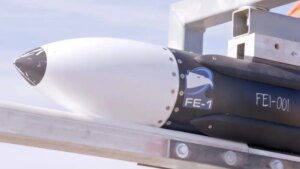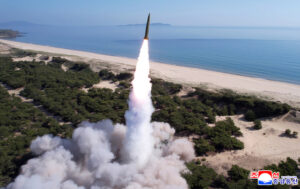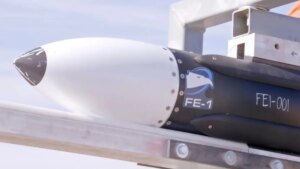土耳其海军现代化护卫舰支持蓝色祖国海事战略

快速阅读: 1997年服役的土耳其海军“奥鲁奇·雷伊斯”号护卫舰完成现代化升级,配备国产ADVENT CMS系统,增强指挥控制、传感器和武器系统,提升远洋作战能力,反映土耳其打造自主海军力量的战略目标。
Commissioned in 1997, TCG Oruçreis belongs to the MEKO 200TN Track II-A variant of the Barbaros-class frigates. With a length of 118 meters, a beam of 14.8 meters, and a full-load displacement of approximately 3,380 tons, the ship is powered by a Combined Diesel or Gas (CODOG) propulsion system composed of two General Electric LM2500 gas turbines and two MTU diesel engines. This setup enables a top speed of 32 knots and an operational range exceeding 4,000 nautical miles at cruising speed. As part of the modernization, the vessel’s legacy electronic and mechanical systems were extensively replaced or overhauled to enhance longevity, automation, and survivability, extending its operational relevance into the 2040s.
At the heart of this transformation is the ADVENT CMS, an indigenously developed, network-centric command and control solution that now governs over 30 subsystems onboard. With more than 700 applications and six million lines of source code, the system enables joint engagement capabilities, tactical decision-making support, and seamless integration with national and NATO data link architectures, including Link-11, Link-16, and Link-22. It supports real-time communication between platforms, autonomous training scenarios without disrupting ship systems, and dynamic threat evaluation modules. These features substantially improve situational awareness, command coordination, and reaction speed in high-intensity maritime combat.
The modernization also includes a comprehensive sensor and weapons upgrade. TCG Oruçreis is now fitted with an advanced suite of offensive and defensive systems including the indigenously produced ATMACA anti-ship cruise missile system and legacy Harpoon missiles for redundancy. The ship’s vertical launching system has been upgraded to the Mk 41 standard, enabling it to deploy quad-packed Evolved Sea Sparrow Missiles (ESSM) for medium-range air defense. The main naval gun was replaced with a 127 mm/54-caliber system, supplemented by two STOP 25 mm stabilized remote-controlled weapon stations and a Phalanx Mk 15 Close-In Weapon System (CIWS) for close-range protection against aerial and missile threats.
Fire control and targeting enhancements are built around the AKREP multi-mode radar system, supported by integrated search radars, national Identification Friend or Foe (IFF) capability, and electro-optical systems. TCG Oruçreis now features improved anti-submarine warfare (ASW) capabilities as well, with updated sonar systems and the integration of the HIZIR torpedo countermeasure suite. The vessel’s electronic warfare capacity is managed by the AREAS-2NC system, providing detection, classification, and countermeasure capabilities against a wide array of electromagnetic threats. The ship also benefits from advanced infrared search and track (IRST) and electro-optical sensors, enabling passive surveillance and targeting in electronically contested environments.
Following months of shore-based and at-sea trials conducted in Turkish waters throughout 2024, including live-fire exercises and full-spectrum combat simulations, the ship successfully passed all acceptance activities. The frigate’s performance was validated during NATO’s largest annual maritime exercise, Dynamic Mariner / Flotex-25, which took place in March 2025 in the Gulf of Cadiz off the coast of Spain. TCG Oruçreis demonstrated full interoperability with allied task groups, functioning as a command platform for multi-domain operations and earning recognition for its new combat capabilities.
This modernization effort must be viewed in the broader geopolitical context of Türkiye’s evolving maritime doctrine. Over the past decade, Ankara has grown increasingly assertive in defending its perceived maritime rights and interests, particularly in the Eastern Mediterranean and the Aegean Sea. With ongoing disputes over exclusive economic zones, access to hydrocarbon reserves, and territorial waters, Türkiye has prioritized the creation of a capable, self-reliant navy capable of sustained operations far from its shores. The “Blue Homeland” (Mavi Vatan) concept underpins this ambition by calling for permanent maritime vigilance, strategic depth, and technological autonomy. By upgrading legacy frigates with domestically produced systems, Türkiye not only enhances its operational resilience but also diminishes its dependence on foreign suppliers, especially amid shifting global defense export dynamics and technology access restrictions.
Moreover, Türkiye’s investment in digital combat systems and multi-role surface platforms underscores its intent to transition from a coastal defense force to a regional blue-water navy. TCG Oruçreis now represents a core asset within this transformation, a highly networked surface combatant capable of executing sea control, area denial, force escort, and intelligence missions across the Turkish Navy’s vast area of responsibility. The refitted frigate will likely serve as a lead vessel in fleet formations and a command-and-control node during expeditionary deployments.
In conclusion, the successful modernization of TCG Oruçreis signals a significant leap in Türkiye’s naval warfare capabilities and reflects the country’s broader ambition to emerge as a decisive regional maritime power. As defense industries in Türkiye continue to mature and deliver sovereign technologies across the naval domain, the Oruçreis upgrade serves as a benchmark for future programs aimed at modernizing the entire surface fleet while promoting national defense industry output. The ship’s entry into active service marks a cornerstone achievement in the Turkish Navy’s strategic roadmap toward 2030 and beyond.
(以上内容均由Ai生成)







